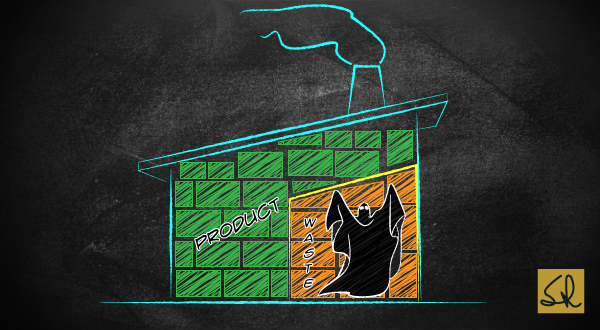Phantom Organisation for Chronic Waste

Challenges for Structured Quality Improvement
Is quality popular in the corporate world? In theory perhaps. Not in practice.
Is quality a fully delegable responsibility? No.
What are the challenges to muster support for a Structured Quality Improvement (Quality Capsule # 005) initiative? The key one is that upper managers believe that quality improvement projects offer lesser tangible rewards than other proposals.
Dr J M Juran taught us to “scare up” support for quality improvement initiatives. He advised: Speak the language of upper managers – MONEY.
Although a quality improvement project may not directly influence revenues, it can dramatically reduce wasteful costs. These wasteful costs are the Costs Of Poor Quality (COPQ) (Quality Capsule # 004). These costs are traceable to a phantom organization within the organization dedicated to meticulously producing waste.
Double Your Profit?
How would corporates react if they were asked: How would you like to Double your Profit without Capital Investment?
Their BIG opportunity is hidden in their respective budgets, in the hidden organization within the organization, dedicated to producing waste. In other words, COPQ.
It should be noted that COPQ ranges between 20-30% of total costs. Compare that to profit margins… the elixir for competitive advantage. Scared?
Here is an example of a batch mode manufacturing plant:
- Sales revenue = Rs 1000 cr
- Capital investment = Rs 500 cr
- Profit = Rs 100 cr
- COPQ = Rs 200 cr
Proposition: Double the Profit.
Option 1: Double the capital investment, to double the sales revenue, to double the profit.
Option 2: Halve the COPQ, to double the profit. All this with no capital investment. Only a habit of quality improvement.
Japan – Post World War 2
The Emperor of Japan, post World War 2, was confronted with a shattered economy. Compounding the agony were two factors: no consumer buying power; and negligible natural resources.
In consultation with industry leaders (of dead factories) the emperor introduced structured quality improvement as a national strategy. Two decades later, results surfaced in the field of entertainment electronics. A decade thereafter, results screamed in the automobile industry.
Profit margins served to make Made in Japan competitive.
Can we make Made in India a quality gold standard?

Make in India….Yes We should acknowledge….n Proud to have such thought Process ….
Are you willing to start Dr Krishnarao?
Made In India should shine in the world. As you said we need management commitment who is in this case government and the leaders like you.
Thanks Mr. Lulla, Priviledged to have implemented COPQ concept and receive Qimpro BestPrax Benchmark recognition in 2017 from you, COPQ is a ice-breaker.
Working on Quality Improvement and reaping COPQ Reduction is a Win-Win-Win for Quality-Finance-Marketing.
How can we ignore this BIG opportunity?